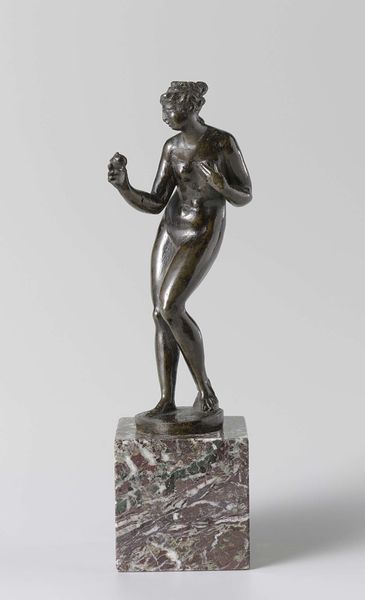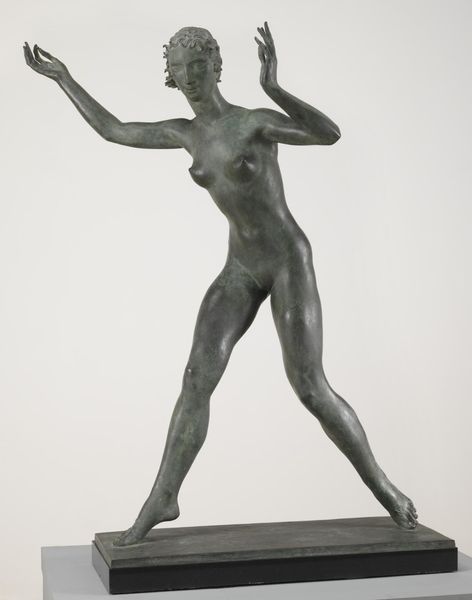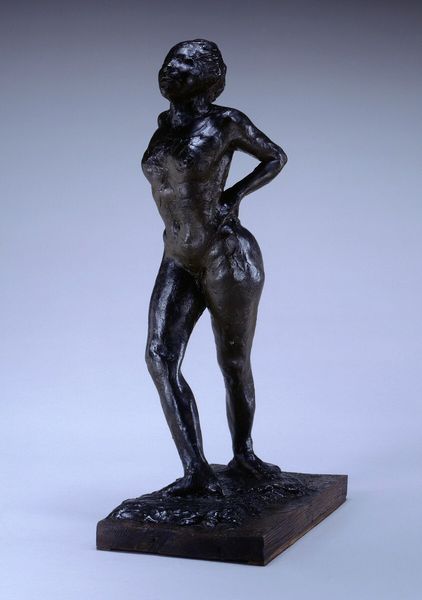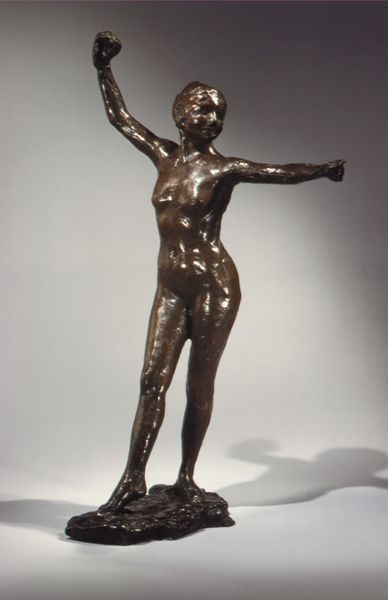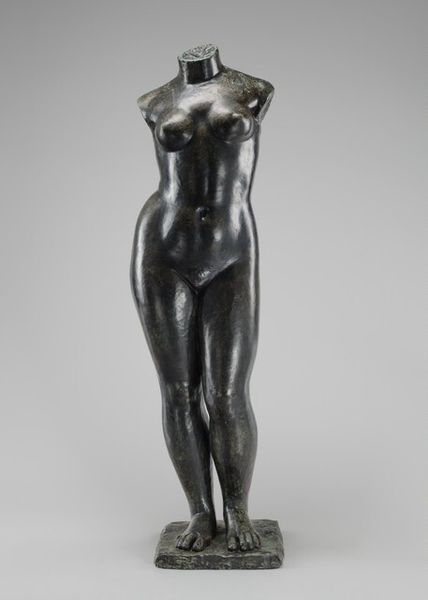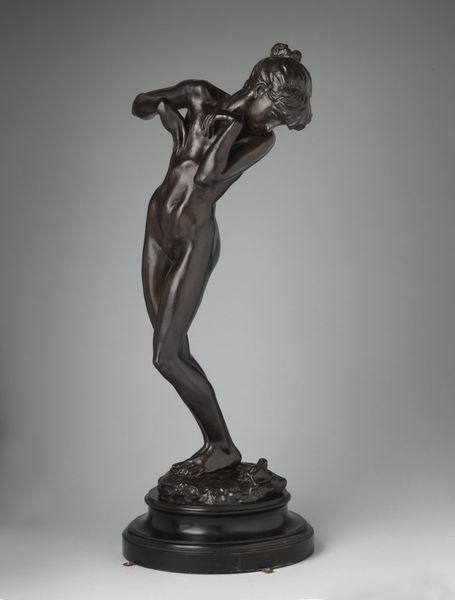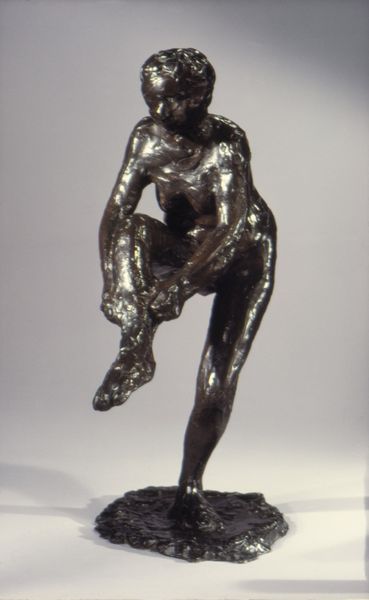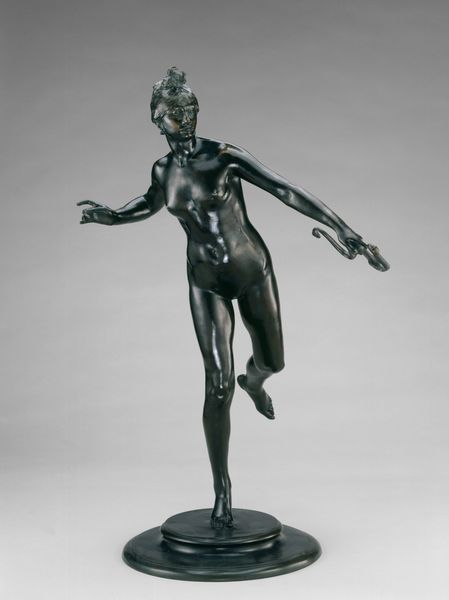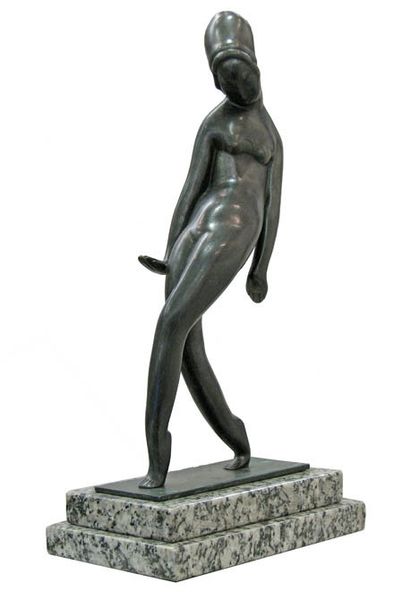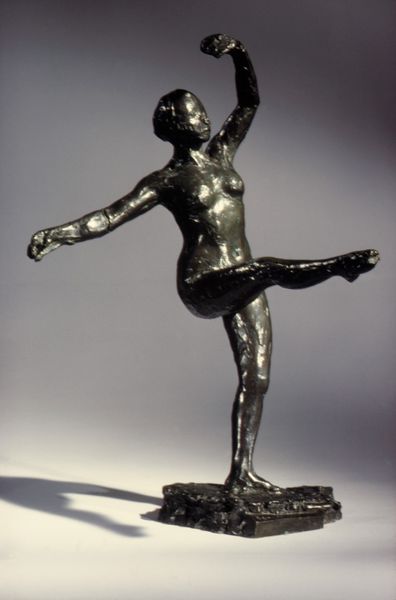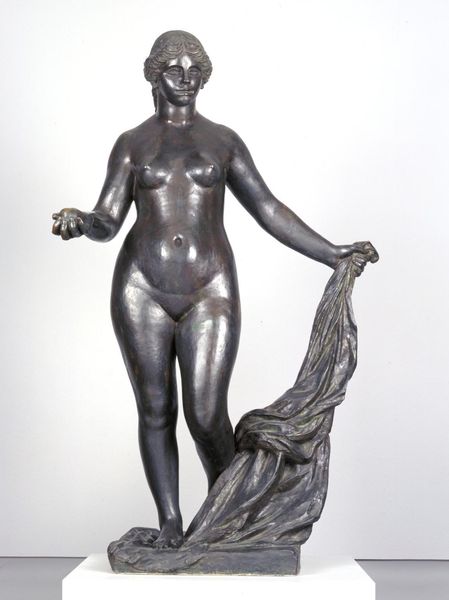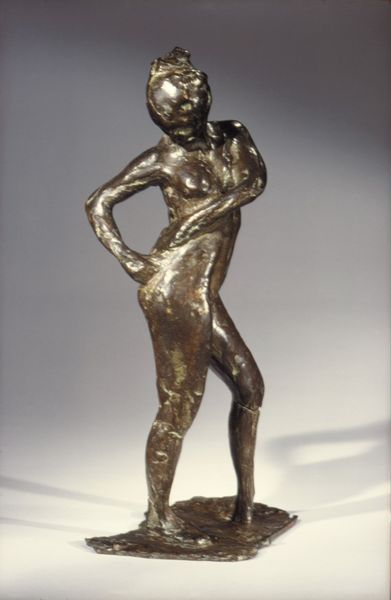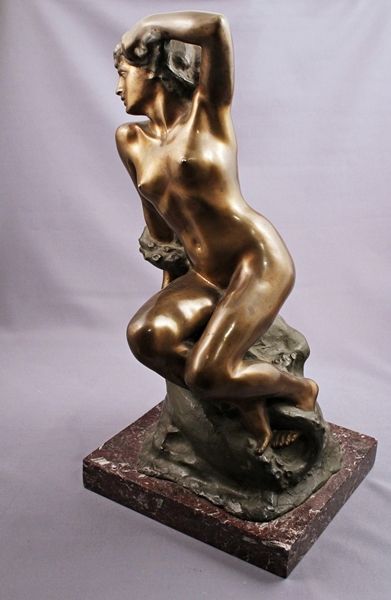
Dimensions: object: 887 x 415 x 330 mm
Copyright: CC-BY-NC-ND 4.0 DEED, Photo: Tate
Curator: This bronze sculpture, titled "Folly," was created by Edward Onslow Ford. The date is uncertain. Editor: There’s a beautiful, almost melancholic grace to it. Her form is idealized, yet the texture of the bronze lends a certain groundedness. Curator: Ford was a prominent figure in the New Sculpture movement, which revived classical ideals but with a naturalistic approach and a focus on surface detail. Editor: The figure's downward gaze and the precariousness of her pose atop that rough-hewn base suggest a contemplation of consequence. Is she about to fall? Curator: The title "Folly" certainly implies a cautionary tale. It reflects the Victorian era's fascination with morality and the potential pitfalls of vanity. Editor: The contrast between the smooth, refined figure and the roughly textured base is striking. It's a clever way to use materiality to underscore the theme. Curator: It's interesting how Ford’s classicism is tempered with a contemporary sensibility. He captures a fleeting moment of introspection. Editor: It really makes you ponder the choices we make. A lovely piece— both aesthetically beautiful and thought-provoking.
Comments
Join the conversation
Join millions of artists and users on Artera today and experience the ultimate creative platform.
tate 8 months ago
⋮
Onslow Ford was an innovator. Here he rejected classical subject matter and conventions of ideal beauty and presented the embodiment of Folly as a pubescent girl poised precariously on the edge of a dangerous rock. Ford’s casting allows enormous detail and a sensuous surface. It was made using the lost-wax process – casting bronze in a mould taken from a detailed wax model. The artist even pressed strands of animal hair into the wax to create the effect of a tangled mop. Such attention to surface detail led critics to complain that the work was too life-like to be acceptable as sculpture. Gallery label, February 2010
